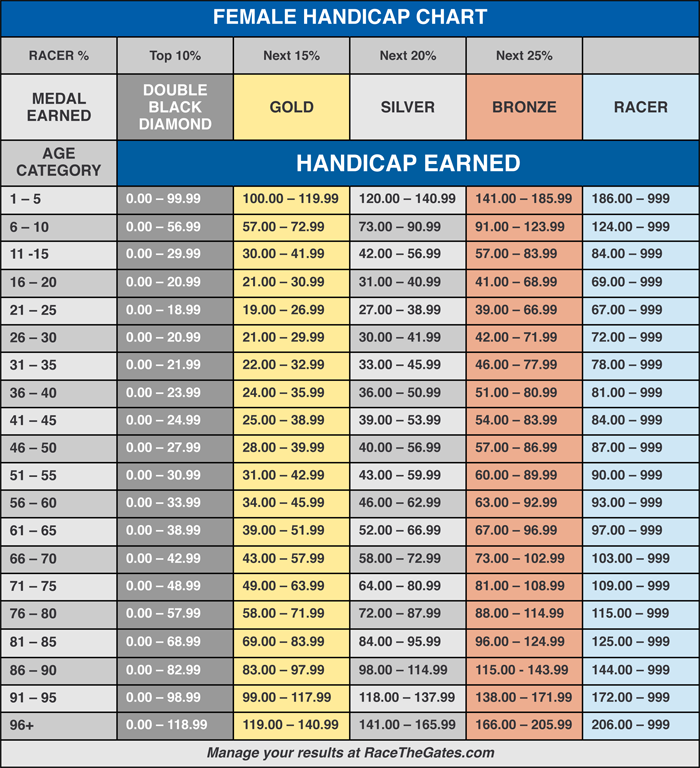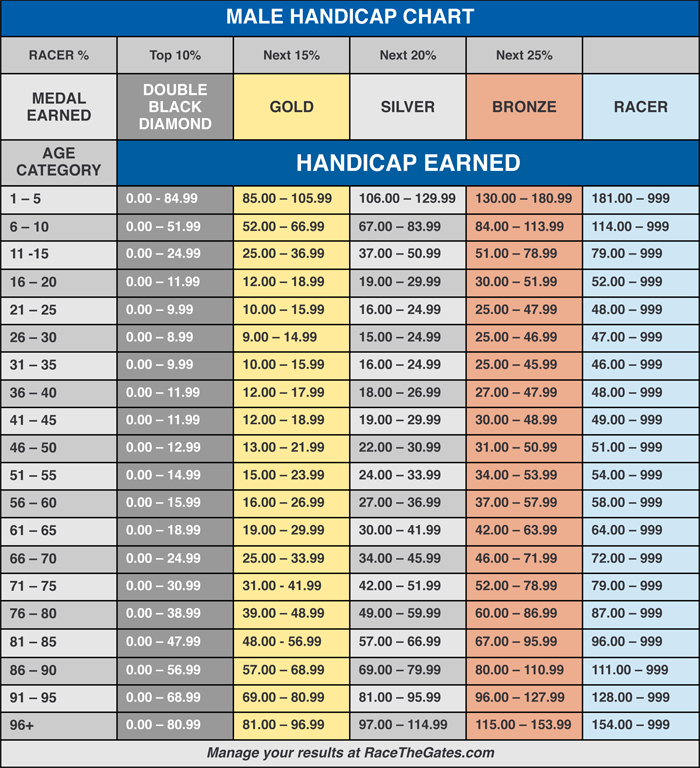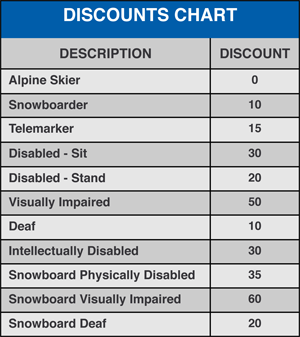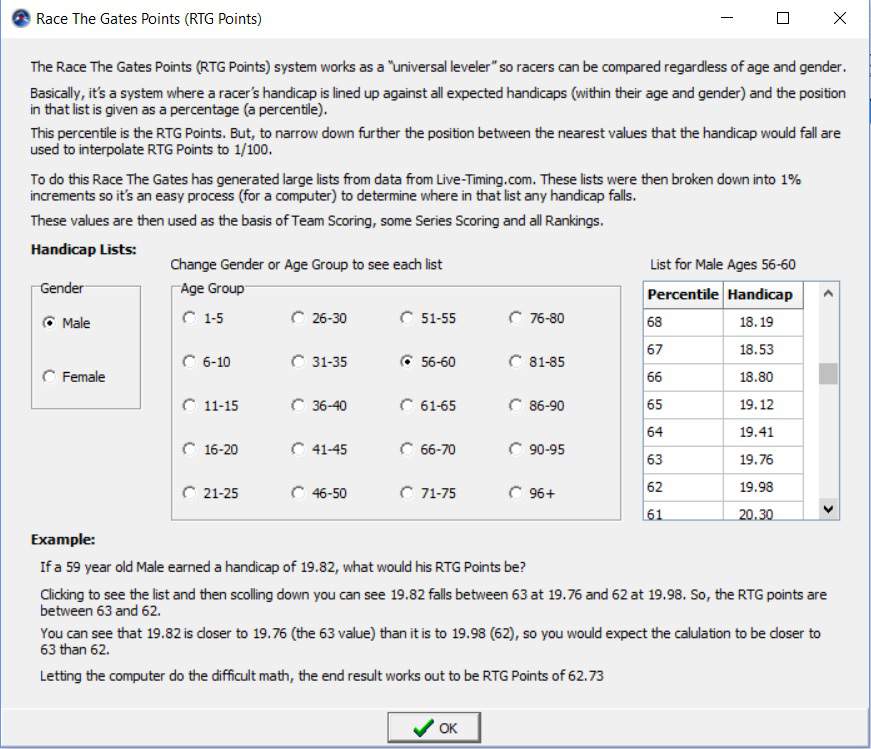| Login to RaceTheGates Racing |
We believe that the Gold, Silver, and Bronze medals are the standard in sports. And so these form the foundation of our medal structure.
But we realize there are experts in all age groups that excel and deserve their own level to strive for. In the Tour de France and other top level bicycle races, they have categories for hill climbs: 4, 3, 2 and category 1 for the very difficult climbs. But for those beyond the norm, they have Hors catégorie (HC), or “beyond categorization”.
We’re introducing a similar concept at Race The Gates with the new ◆◆ Double Black Diamond medal. This is for the experts. Only the top percentage of racers can expect to race at this level. All age and gender levels have a cutoff for a Double Black Diamond medal, and if a Gold is easily in your reach this can be your next goal!

Based on analysis of races posted on Live-Timing.com, Race The Gates has new age grouping and handicap requirements. These improvements have been applied for each medal in each age and gender group.



We’ve created a new method for assigning points to racers based on their results. The Race The Gates Points (RTG Points) system works as a “universal leveler” so racers can be compared regardless of age and gender.
Basically, it’s a system where a racer’s best handicap of the day is lined up against all expected handicaps (within their age and gender) and the position in that list is given as a percentage (a percentile). This percentile is the RTG Points.
To do this Race The Gates has generated large lists from data from Live-Timing.com. These lists were then broken down into 1% increments so it’s an easy process (for a computer) to determine where in that list any handicap falls.
These values are then used as the basis of Team Scoring, some Series Scoring and all Rankings.

You, as a racer, aren’t the only one who improves with practice. A pacesetter, who probably gets to ski every day, will probably be racing a lot faster at the end of the season than at the start. This results in an inaccurate par time, and you end up with the wrong handicap!
So, we’re creating a system to solve this serious problem. We run statistics on each race. Then, the system works out if the distribution of awarded handicaps and medals, especially from those racing who have raced many times, is as expected or is drifting over time. We will automatically apply adjustments as needed to the pacesetter handicap and this data is seamlessly downloaded to the resort database for future races.
No races will have the pacesetters handicap adjusted after the fact using this process.